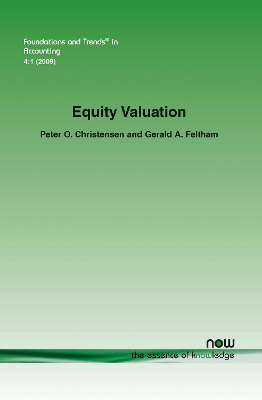Foundations and Trends (R) in Accounting
1 total work
Equity Valuation reviews and critically examines the standard approach to equity valuation using a constant risk-adjusted cost of capital and develops a new valuation approach discounting risk-adjusted fundamentals using nominal zero-coupon interest rates. It is organized as follows:
- Chapter 2 (Risk-Adjusted Discount Rates) reviews standard valuation models based on risk-adjusted discount rates.
- Chapter 3 (Multi-Period Asset Pricing Theory and Accounting Relations) examines key results from multi-period asset pricing theory in discrete-time, and shows how equity valuation models can equivalently be based on free cash flows or accrual accounting numbers.
- Based on these results, the authors derive an accounting-based multi-period equity valuation model presented in Chapter 4 (An Accounting-Based Multi-period Equity Valuation Model) with equilibrium risk-adjustments determined by prices of aggregate consumption claims.
- Chapter 5 (Equity Valuation with HARA Utility) includes a general equilibrium analysis of a setting in which the investors have HARA utility, and aggregate consumption and residual operating income are jointly normally distributed.
- A set of appendices follows including Appendix B that extends the setting to preferences with external habit formation (which recently has gained popularity in asset pricing theory).
- Appendix C, which discusses the relationship between risk-adjusted expected cash flows and certainty equivalents.
